At all times, horses have been faithful assistants in various spheres of activity and mesmerized with their extraordinary grace and beauty. The Percherons deserve special attention among the many breeds, distinguished by their particularly large size and extraordinary strength. These animals have an interesting history of origin and external parameters. However, in addition to this, those who want to have such a horse should also take into account the peculiarities of maintenance and care of this breed. All these nuances will be discussed in detail in this article.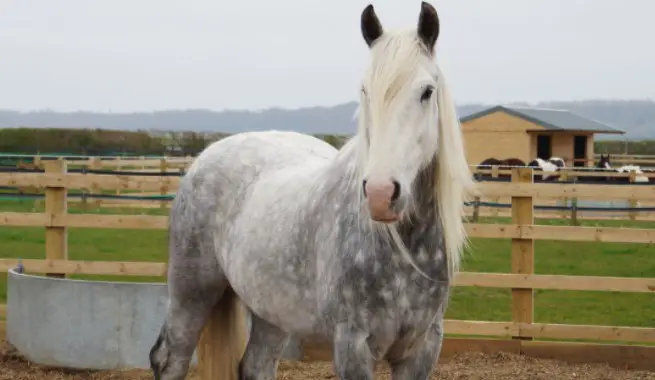
How did the Breed Originate?
The opinions about how and when exactly the Percherons were bred are different to the present day. According to one version, these horses appeared more than 10 centuries ago – in the eighth century AD. The result of their origin is a crossbreeding of the Arabian stallion with a mare from the northwestern lands.
According to another version, the Percheron appeared much later – only in the 19th century when the French draft horses were crossbred with the Arabians. Due to the most suitable climate for such animals and the peculiarities of nature in France, the Percheron breed successfully adapted and soon became the icon and pride of the French lands.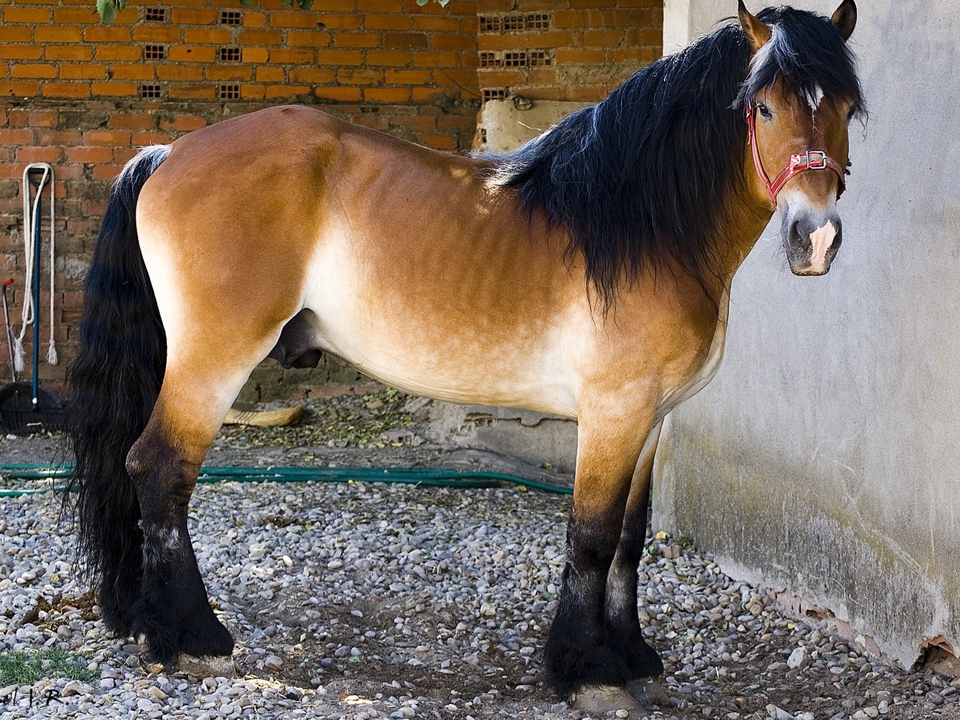
Then, closer to the middle of the 19th century, these big horses began to be transported to the territory of the USA where there were more than 33 thousand of them a century later.
The great damage to these horses was caused by periods of war as they were often used for militaristic purposes. By the middle of the last century, after World War II, there were less than 100 surviving Percherons in the United States.
Nowadays, such a physically powerful breed is used for agricultural work and transportation of some goods.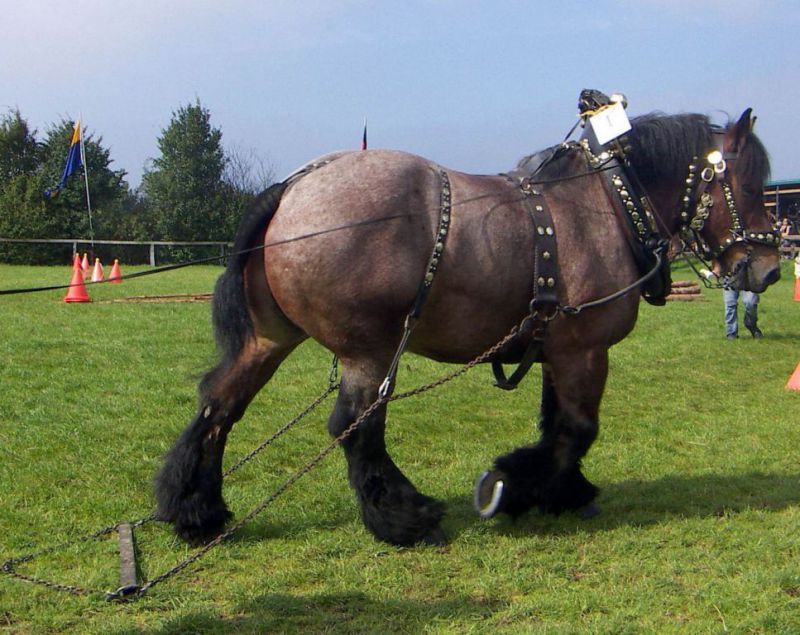
Specific Features
The Percherons have features that are unique and set them apart from other breeds. There was a version at one time that these horses were the tallest in the world but this information was soon disproved. In general, the main characteristics of the representatives of this breed can be described as follows.
Exterior
The appearance of the Percheron is unique. Let’s consider the main features that set these horses apart from others.
- The height at the withers can be up to 185 cm. The Percherons are divided into two types the first of which includes smaller breeds, and the second – massive and tall horses. Also, an important factor is the habitat of the Percherons. The French breed representatives are 155 to 185 cm tall at the withers, the British ones are smaller – 165 to 168 cm, and the American ones reach a height of 168 to 180 cm.
- Despite the gender of the Percheron, the standard length of its torso is 169 cm. But the heart-girth varies: while males have 202 centimeters, females have 197 centimeters.
- The size of the metacarpus is 227 mm (for mares) and 244 mm (for stallions).
- In comparison with the body parameters, the Persheron’s head is not very large. At the same time, the forehead is quite massive and wide and has a convex shape. The eyes of such horses are slightly rolled up, the nose has a slightly flattened shape and large nostrils, and there are also rather long ears.
- The chest of such horses is characterized by two features at the same time – both depth and impressive width.
- Despite its moderate length, the Percheron’s neck has a beautiful curve. It is muscular and strong.
- Like any physically strong horse, the breed representatives have a raised withers.
- A particularly attractive part is the mane of such horses. It is characterized by a fairly great length, thickness, and lushness.
- The croup is straight, quite powerful, and has impressive dimensions.
- The tail is set low and very fluffy at the same time.
- The smoothness of movement appears due to the peculiarities of the back structure. Despite the fact that the Percheron is not very long, it is quite muscular and can withstand impressive loads.
- The legs are a characteristic feature of such horses. If the legs do not differ from the legs of other horses in the area of the forearm, the bone expands in the area of the metacarpus due to which the metacarpus itself is short but very strong. The bones of the leg joints are particularly strong.
- The hooves have high strength while being quite wide.
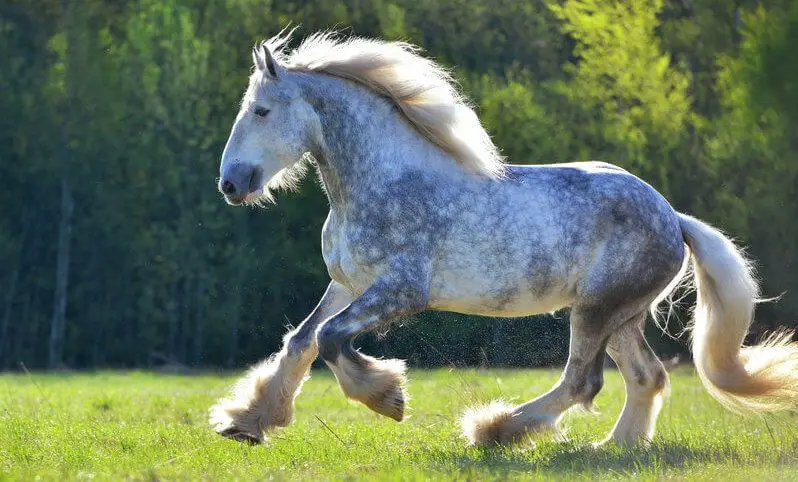
Coat Color
If we consider this breed in terms of the coat color, we can note that the predominant one is dapple-gray. Black and gray horses of this breed are also quite common. Rarer shades include roan and chestnut coat colors.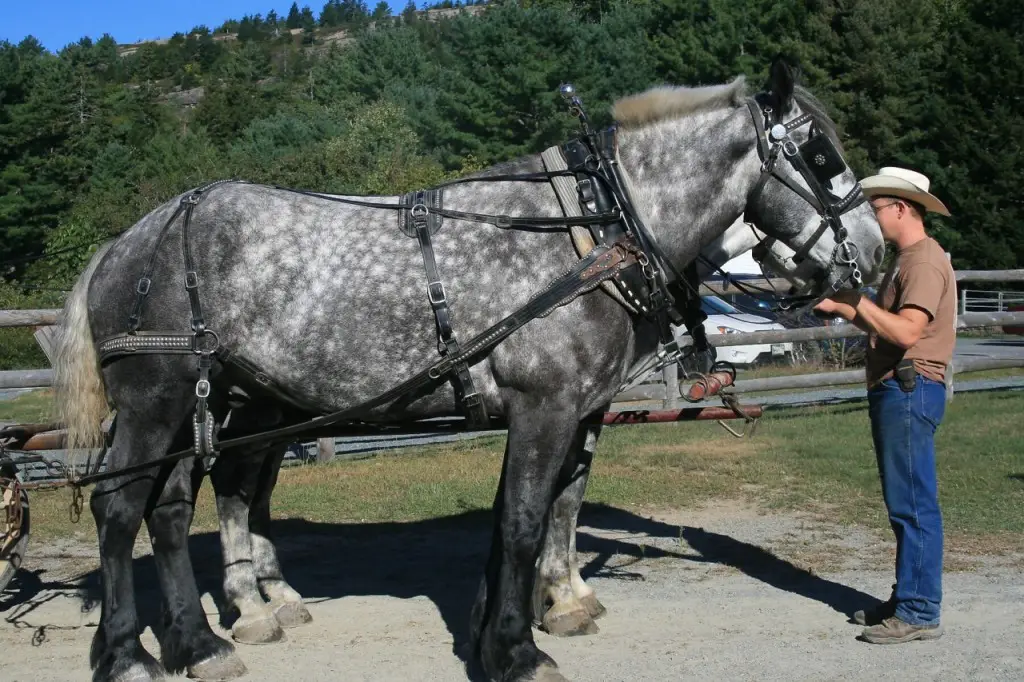
Character
It is believed that such large horses as the Percherons are not inclined to think quickly. This is partly true but the character of these horses is patient, calm, and unflappable which makes it convenient to communicate and work with them. Nevertheless, these horses are quite active, they need to move. An interesting feature is the ability of these animals to get quickly and correctly oriented in extreme situations.
The horses’ stamina allows them to be used for moving heavy loads. And due to their gracefulness and soft ride, the Percherons are used for horse parades and even riding.
An important character trait is the ability to adjust to different conditions. The quick adaptation greatly makes the breeding process easier. An important positive trait is the rather good immunity of these stallions. The adaptation also explains such a quality of these horses as being undemanding to weather conditions. They should not be let out of the stable only in very bad weather or in severe frost.
It is worth noting that there is such a character trait as loyalty to the owner. They become not only assistants in various works but also faithful friends of a man.
Maintenance
The Percheron horse stands out because it is unpretentious. The minimum conditions for the animal’s comfort are a spacious room that is clean, dry, and warm.
However, to make care for the horse truly full-fledged, it is recommended not to neglect some additional procedures.
- Even if the animal has no visible ailments, it should still be examined regularly by a veterinarian for disease prevention and general health checks.
- The Percheron’s mane should be carefully cared for. Do it using a comb with bristles based on natural materials.
- During the hot season, the bathing procedure should not be neglected. This will not only maintain hygiene but also improve the horse’s well-being.
- Use such a procedure as a contrast shower to relieve the Percheron’s body after exertion and physical activity.
- The regular removal of impurities from the horse’s ear cavities and nostrils should be performed.
- The most balanced diet should be made, and it should correspond to the degree of exertion. In the warm seasons, the horse should be taken out to graze where natural grasses grow. The main source of nutrients in cold seasons should be hay and other special feed. Besides the hay usually presented in the form of clover, oilcake as well as flour should be present in the diet.
- Be sure to inspect the horse’s hooves and clean them in a timely manner using a special brush and hook.
- Check the condition of the Percheron’s teeth once a week. If you notice inflammation on the gums or other problems, you should immediately seek help from your veterinarian.
- To avoid skin diseases, regular procedures such as cleaning the animal’s skin, haircuts (during the winter), and proper fitting of the saddle and harness should be performed.
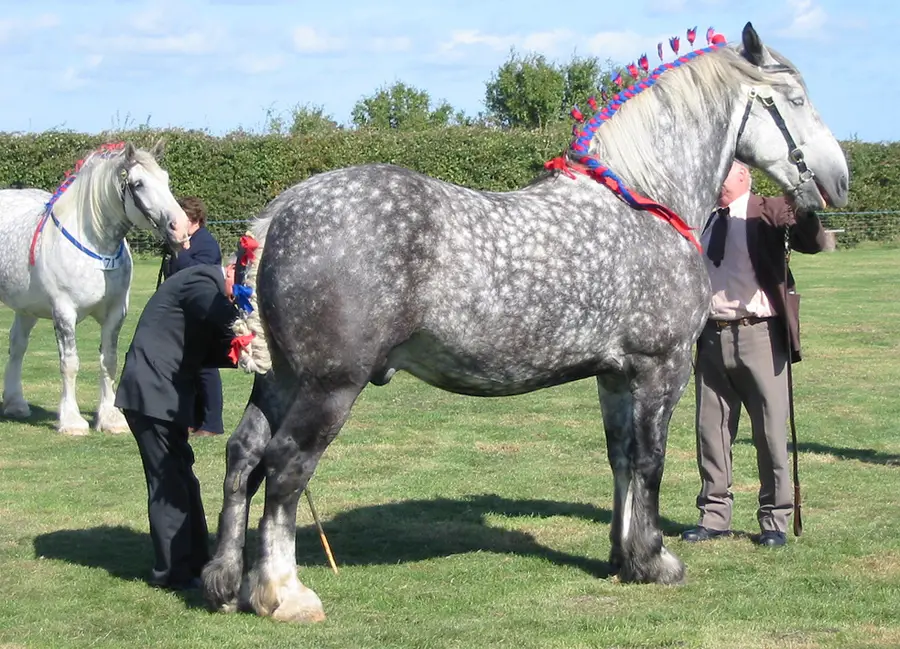
Breeding
The process of independent breeding requires some knowledge of the Percheron’s breeding peculiarities.
- The pregnancy of a Percheron mare is not always easy to recognize because the size of the horse is initially quite large. Therefore, it is necessary to pay attention to changes in the female’s behavior. The appearance of a desire to defend the territory, as well as aggressiveness towards other horses living with her, and an increased appetite are the main signs of pregnancy. This period lasts from 340 to 350 days depending on the gender of a foal as well as the season.
- It is important to carefully monitor the pregnant mare’s diet. Coarse feeds should be minimized by giving preference to the highest quality products. During the third trimester, the horse should receive the maximum number of nutrients through the feed.
- Foals of this breed mature quite late – 2 years after birth. During this time, it is important that their build becomes correct and their bones become stronger. That is why it is necessary that the little Percherons spend a lot of time in the fresh air. Also, you should not forget about a sufficient amount of feed to replenish the nutrients and energy supply of such active animals.
- Even at a small age, horses of this breed show an amazing ability to adapt, so you don’t have to worry about the foals spending a lot of time outdoors.
- If you want to breed a horse for sport riding or hunting, you need to crossbreed the Percheron with a lighter-weight breed.
- It is also worth noting that it is officially forbidden to cut the tails of these horses because this procedure deprives the animals of the ability to protect themselves from insects in the summer.
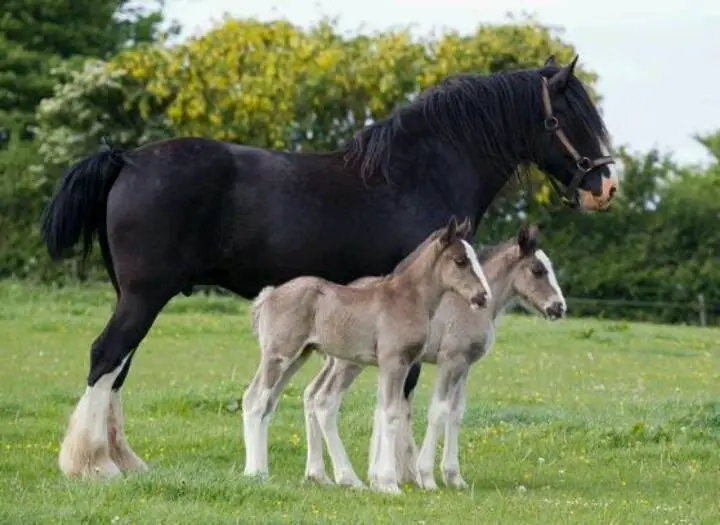
Thus, the Percherons are excellent farming companions whose breeding does not require much trouble. Care and attention to these animals will make them real pets, and the result will give you a lot of positive emotions.

